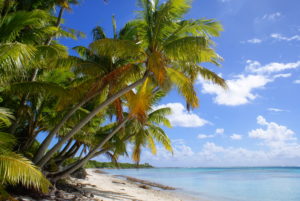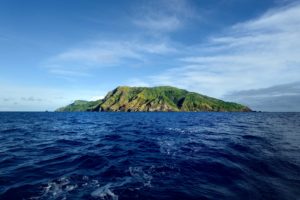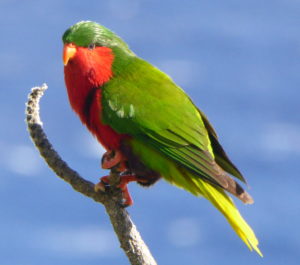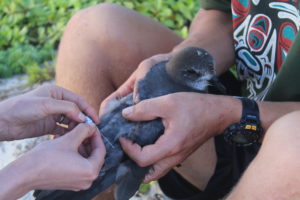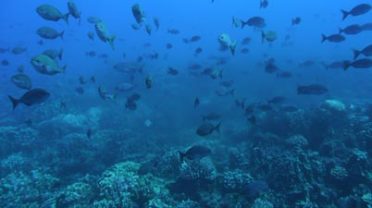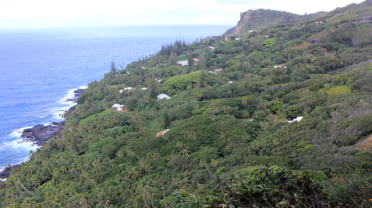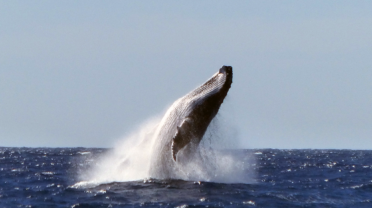Oeno
Oeno is a low coral atoll which lies about 120 km to the north-west of Pitcairn. It consists of a small islet, 65 hectares in area, surrounded by a shallow lagoon. The reef surrounding the lagoon has a natural gap at its northern end, allowing for water exchange and for the passage of shallow-draft boats into and out of the lagoon.
Oeno atoll hosts an internationally significant wintering population of bristle-thighed curlews, as well as large breeding populations of seabirds including Murphy’s petrels, red-footed boobies, and fairy terns. Pacific rats were eradicated from Oeno in 1997, and since then bird numbers have seen a significant increase.
In 2010 it was listed as an Important Bird Area by Birdlife International, and was proposed for designation as a Ramsar site in 2005.
Pitcairn
Pitcairn is a high volcanic island of 4.6 km2, rising to a peak of 347 metres. It is the most southerly island, and also the youngest (a little less than one million years old), in the Pitcairn group.
Seabirds including the brown noddy and the red-tailed tropicbird breed on Pitcairn. However, their numbers are lower than at the other islands of the group (likely because of the human population and introduced rats and cats). Nevertheless, Pitcairn is the only known nesting site for the endemic Pitcairn reed warbler, and for this reason it is listed as an Important Bird Area by Birdlife International.
Pitcairn is home to 81 native plants, nine of which are known to be endemic. The majority of these native plants are now threatened, and the endemic yellow fatu – only rediscovered in 2003 – is now extinct in the wild.
Henderson
Henderson is the largest of the four islands in the Pitcairn group. The island is 43 km2 and sits roughly 35 metres above sea level. Thanks to the low level of human influence, Henderson is one of the best remaining examples of a raised coral atoll ecosystem, and for this reason was granted UNESCO World Heritage Site status in 1988.
Henderson is home to over 50 species found nowhere else on earth, including four unique land-birds: the Henderson fruit-dove, Henderson lorikeet, Henderson rail and Henderson reed-warbler. The island, a global stronghold of the gadfly petrel group, is also the only known breeding site of the endangered Henderson petrel, and is listed as an Important Bird Area by Birdlife International. Sadly, these birds are threatened by the presence of introduced Pacific rats. The RSPB and partners are currently working to remove rats from the island and allow bird numbers to replenish.
Over 60 plants are native to Henderson, of which nine are known to be endemic. Two introduced timber species (miro and tou) are both important as a source of wood for Pitcairn Islanders.
Ducie
Ducie is the most remote of the Pitcairn Islands, and the southernmost coral atoll in the world. The atoll comprises four islets or motus with a combined total area of just 1.5 square miles. The main landmass is named Acadia.
Over 90% of the world’s Murphy’s petrel (or 250,000 pairs) nest on Ducie, and it is also an extremely important nesting site for Kermadec and Herald petrels, and Christmas shearwaters. For this reason Ducie has been named an Important Bird Area by Birdlife International. In 1997, introduced Pacific rats were eradicated from Ducie, which has likely contributed to its continued role as a seabird haven.
Ducie is low in plant diversity, with just three native species recorded.


 中文
中文 MY
MY ID
ID